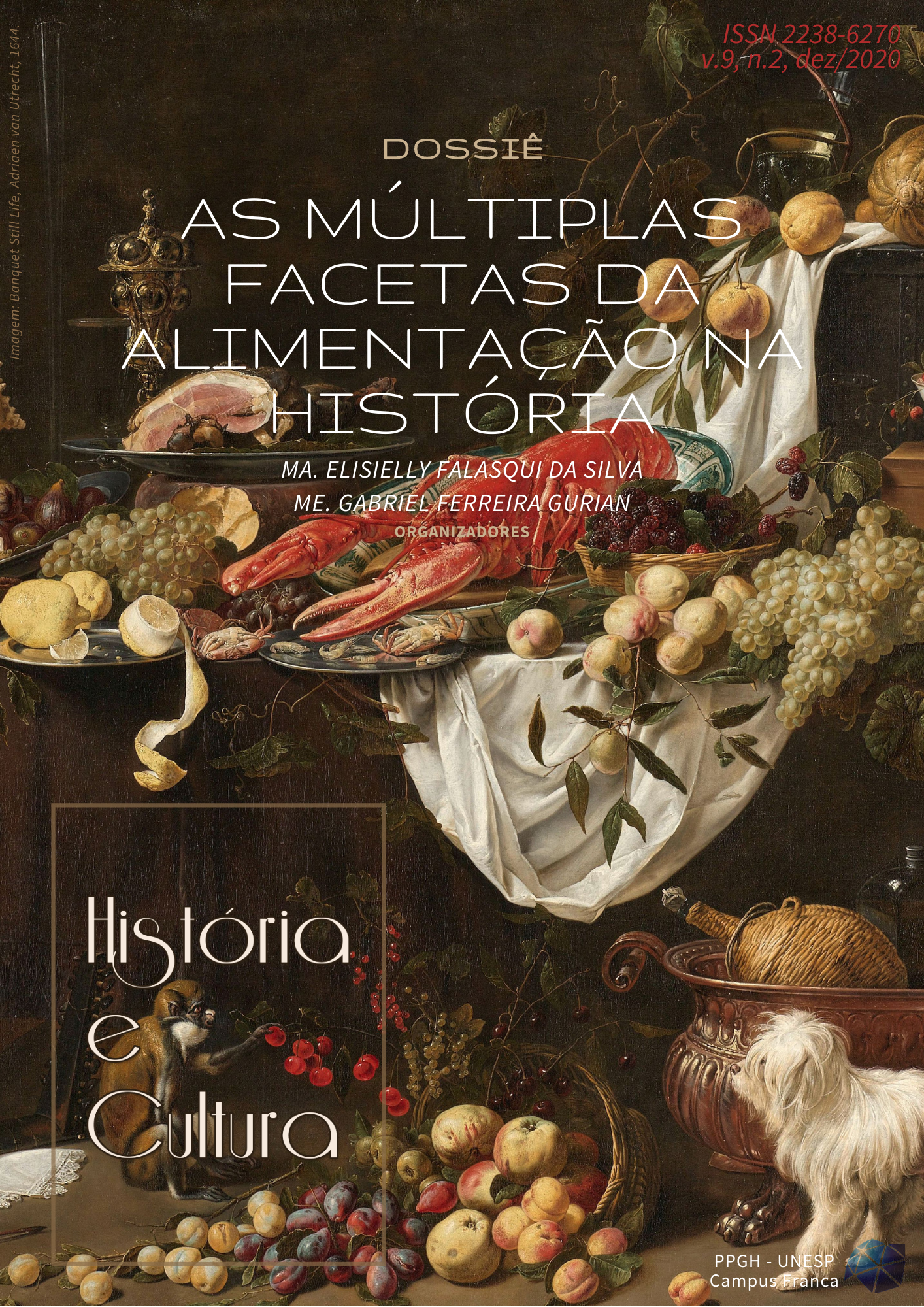Ethos e magia na epopéia estoniana Kalevipoeg
DOI:
https://doi.org/10.18223/hiscult.v9i2.2921Abstract
Kalevipoeg foi a epopeia estoniana surgida no século XIX, concebida primeiramente por Robert Faehlmann e, no advento de seu falecimento, escrita e finalizada por Friedrich Reinhold Kreutzwald. O épico surgia acima de tudo para atender à necessidade da Estônia de livrar-se do domínio cultural e político germânico por meio da criação de uma identidade nacional genuinamente estoniana que não demonstrasse qualquer traço de seus dominadores alemães. Os valores e características necessários à construção de tal identidade convergiram no herói Kalevipoeg, retirado do folclore nativo estoniano e reconfigurado para que se encaixasse aos moldes de um grande épico. O objetivo do presente artigo foi o de investigar como Kreutzwald atribuiu um ethos específico à figura do(s) feiticeiro(s) e qual valor conferiu à prática da magia em sua obra. Terminamos por elucidar como esta possui uma conotação majoritariamente negativa na epopeia, praticada pelo ethos do estrangeiro maligno, encarnado ora na figura do lapão, ora na figura do finlandês.References
Fontes Primárias
KREUTZWALD, Friedrich Heinholt. Kalevipoeg, Epopeya Nacional Estonia. Tradução de Mariano González Campo com base na adaptação de William Kirby para a prosa. Madrid: Miranguano Ediciones, 2015.
Fontes Secundárias
ABONDOLO, Daniel. Introduction. In: ABONDOLO, Daniel (eds.). The Uralic Languages, 2006, p. 1-43.
ARENDT, Hannah. Origens do Totalitarismo: antissemitismo, imperialismo, totalitarismo. Rio de Janeiro: Companhia de Bolso, 2013.
ARISTÓTELES. Poética. Tradução e comentários de Eudoro de Souza. São Paulo: Imprensa Nacional Casa da Moeda, 1986.
ARUKASK, Madis. The Estonian national epic, Kalevipoeg: its sources and inception. In: CAMPBELL, Matthew (eds.); PERRAUDIN, Michael (eds.). The voice of the people: writing the European folk revival, 1760 – 1914, 2012, p. 123-141.
ARUKASK, Madis. Runo songs, Kalevipoeg and Peko in the question of national identity. In: HONKO, Lauri (eds.). The Kalevala and the World’s Traditional Epics, 2002, p. 420-432.
BAILEY, Michael. The meanings of magic. Magic, Ritual and Witchcraft, n.1, 2006, p. 1-23. Disponível em: https://muse.jhu.edu/issue/12704. Acesso em 30/08/2019.
DUBOIS, Thomas. Frithiof’s Motley cousins: on the perils of using folklore to create a National Epic. In: BRANTLY, Susan (eds.); DUBOIS, Thomas (eds.). The Nordic Storyteller: essays in honour of Niels Ingwersen, 2009, p. 178-210.
DUBOIS, Thomas. Lyric, Meaning and Audience in the Oral Tradition of Northern Europe. Indiana: University of Notre Dame Press, 2006.
GONZÁLEZ, Teresa. Noaidi: El Chamán Sámi y su función de mago. ‘Illu Revista de Ciencias de Las Religiones, n.19, 2014, p. 65-91. Disponível em: https://revistas.ucm.es/index.php/ILUR/article/view/46612. Acesso em 30/08/2019.
HANEGRAAFF, Wouter. Magic. In: MAGEE, Glenn Alexander (eds.). The Cambridge Handbook of Western Mysticism and Esoteriscism, 2016, p. 393-404.
HASSELBLATT, Cornelius. Kalevipoeg Studies: the creation and reception of an Epic. Helsinki: Studia Fennica Folkloristica, 2016.
HOLMBERG, Uno. The mythology of all races, v.IV: Finno-Ugric, Siberian. New York: Cooper Square Publishers, 1964.
HONKO, Lauri. Text as process and practice: the textualization of oral epics. In: HONKO, Lauri [Ed.]. Textualization of Oral Epics. Berlin: Mouton de Gruyter, 2000, p. 3-56.
KLANICZAY, Gábor. A Cultural History of Witchcraft. Magic, Ritual and Witchcraft, n. 10, 2010, p. 167-212. Disponível em: https://muse.jhu.edu/issue/21140. Acesso em 30/08/2019.
KURRIK, Juhan. Ilomaile: Estonian Folk Songs. Tartu: University of Tartu Press, 2013.
LÖNNROT, Elias. The Kanteletar. Introduction, Notes and Translation to English by Keith Bosley. Oxford: Oxford University Press, 1992.
MITCHEL, Stephen. Witchcraft and magic in the Nordic Middle Ages. Philadelphia: University of Pennsylvania Press, 2011.
MOYNE, Ernest. Raising the Wind: The Legend of Lapland and Finland Wizards in Literature. Canada: Associated University Press, 1981.
NORDIN, Jonas; OJALA, Carl-Gösta. Collecting, connecting, constructing: Early modern commodification and globalization of Sámi material culture. Journal of Material Culture, v.23, 2017, pp. 58-82. Disponível em: https://journals.sagepub.com/doi/full/10.1177/1359183517741663. Acesso em 30/08/2019.
OINAS, Felix. The Balto-Finnic Epics. In: OINAS, Felix [Ed]. Heroic Epic and Saga: An Introduction to the World’s Great Folk Epics. Indiana: University Press, 1978, p. 286-310.
PENTIKÄINEN, Juha. The Shamanic Drum as Cognitive Map. Cahiers de littérature orale, n. 67, 2012, p. 1 – 12.
PENTIKÄINEN, Juha. Introduction. In: PENTIKÄINEN, Juha (org.). Shamanism and Northern Ecology, 1996, p. 5 – 25.
SARV, Mari. Possible foreign influences on the Estonian regilaul metre: language or culture? In: LOTMAN, Mihhail (eds.), LOTMAN, Maria-Kristiina (eds.). Frontiers in Comparative Prosody, 2011, p. 1-21.
SPINELLI, Miguel. Sobre as diferenças entre éthos com epsílon e êthos com eta. Trans/Form/Ação, n. 32, v.2, 2009, p. 9-44. Disponível em: http://dx.doi.org/10.1590/S0101-31732009000200001. Acesso em 30/08/2019.
TALVET, Jüri. Introdução. In: KREUTZWALD, Friedrich Heinholt (esc.). Kalevipoeg, Epopeya Nacional Estonia, 2015, p. III – XXIII.
TURUNEN, Aimo. The Balto-Finnic Languages. In: SINOR, Denis (eds.). The Uralic Languages: description, history and foreign influences, 1988, p. 58-84.
TOLLEY, Clive. The Kalevala as a model for our understanding of the composition of the Codex Regius of the Poetic Edda. Turun yliopiston folkloristikan julaisuja, Helsinque: n. 3, v. 1, p. 114-143, 2013.
TOLLEY, Clive. Shamanism in Norse myth and magic, vol.1. Finland: Academia Scientiarum Fennica, 2009.
TSUGAMI, Susan Sanae. Magia. In: LANGER, Johnni (org.). Dicionário de História das Religiões da Antiguidade e Medievo. São Paulo: Vozes, no prelo.
WILSON, William. Folklore and Nationalism in Modern Finland. Bloomington & London: Indiana University Press, 1976.
Downloads
Published
Issue
Section
License
Os(as) autores(as) são os detentores dos direitos autorais dos artigos encaminhados à Revista História e Cultura e fica autorizado ao periódico a publicação do referido manuscrito. O trabalho permanece licenciado sob a Licença Creative Commons Attribution CC BY 4.0, a qual permite o compartilhamento do material desde que a autoria seja devidamente atribuída e referenciada.

